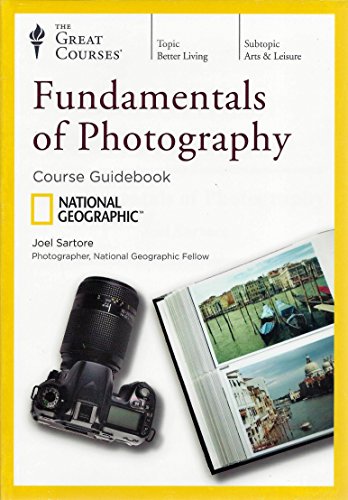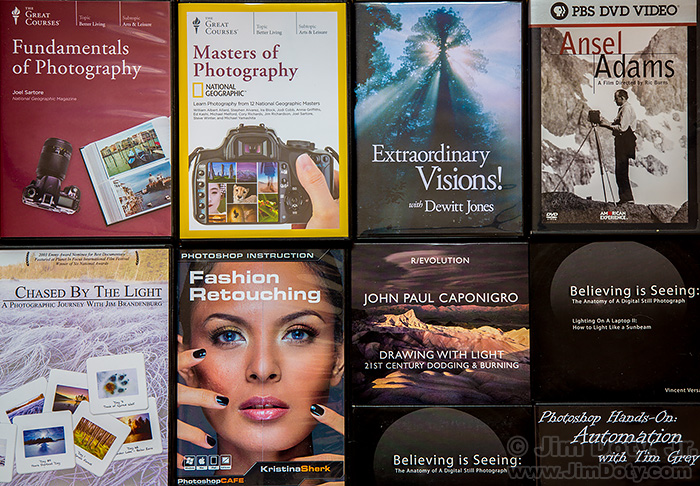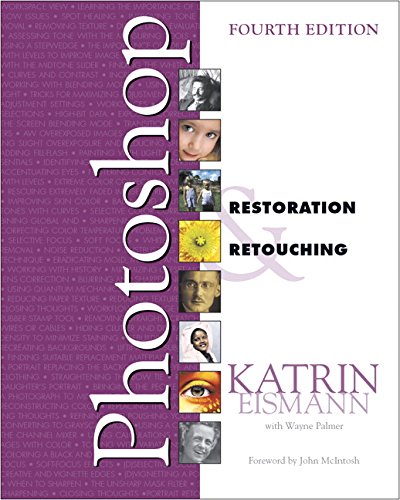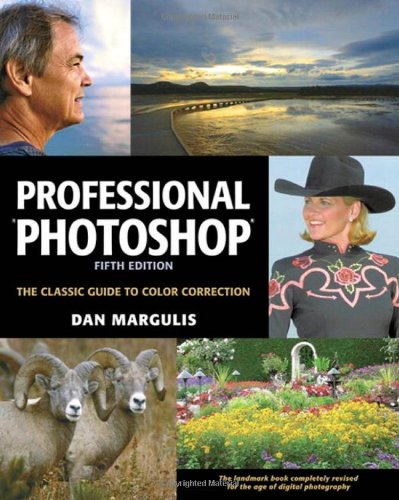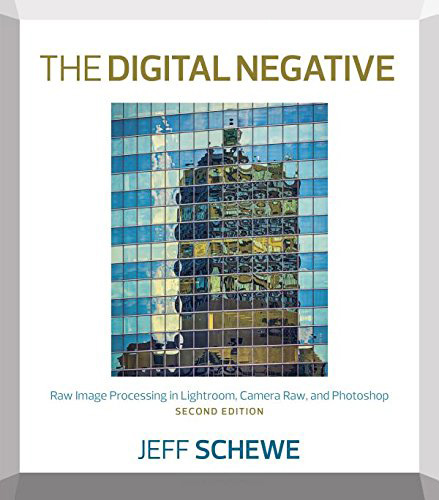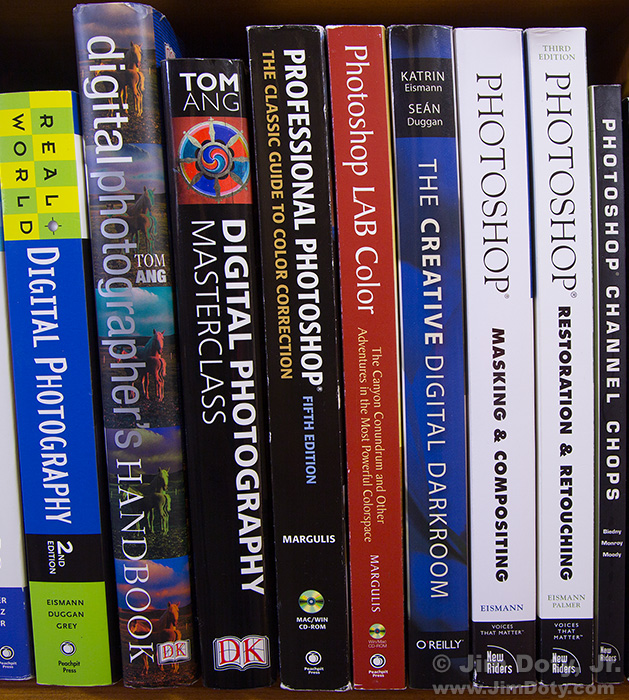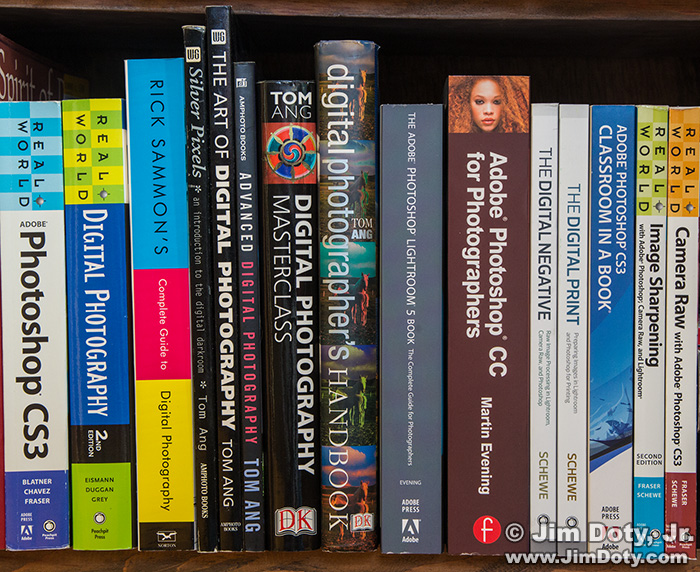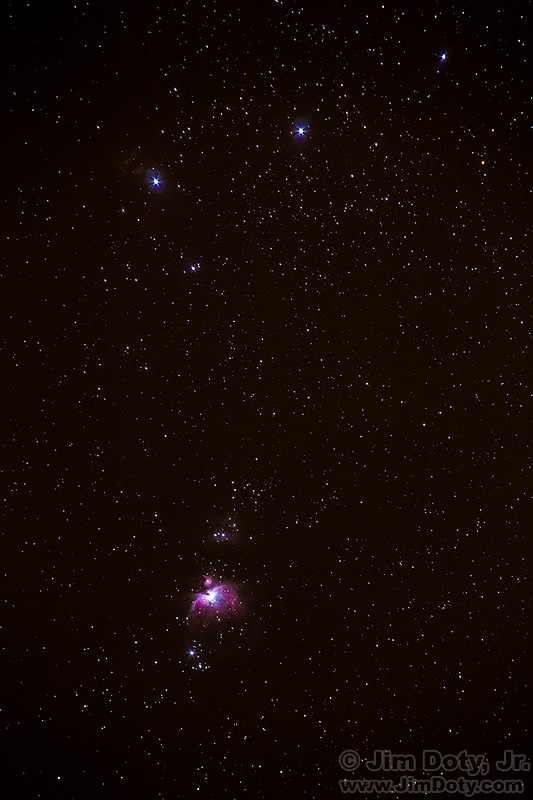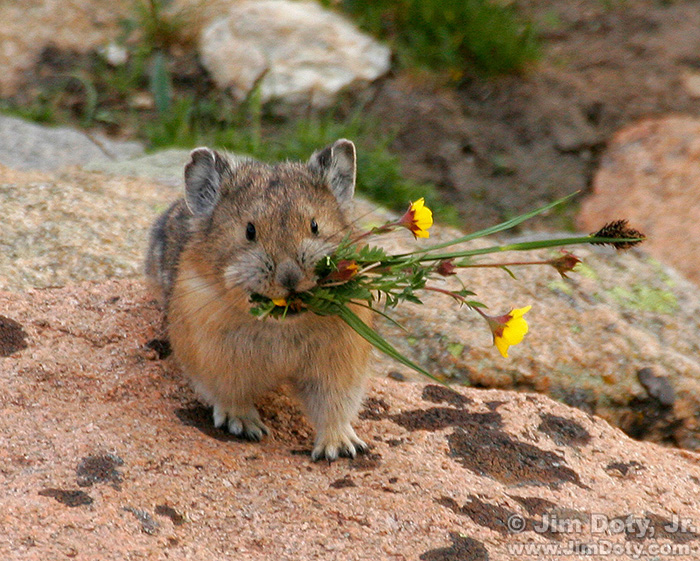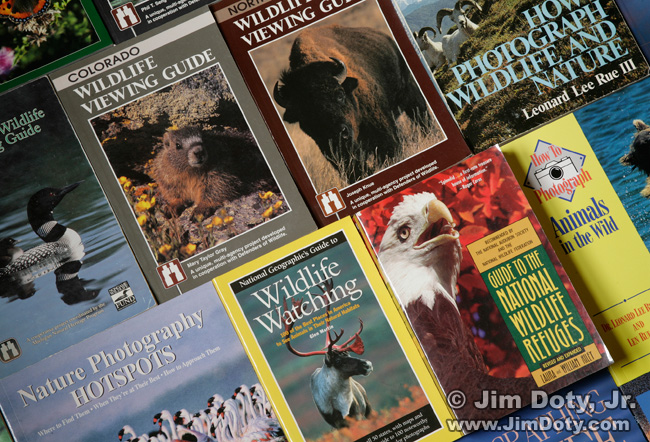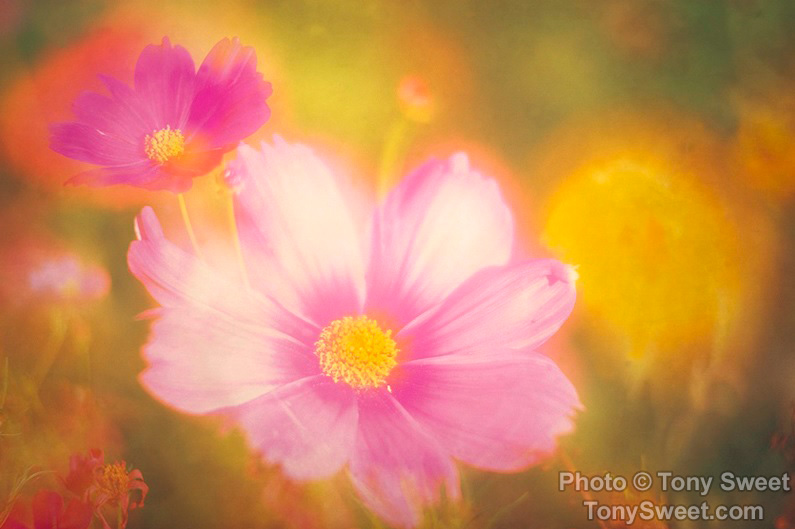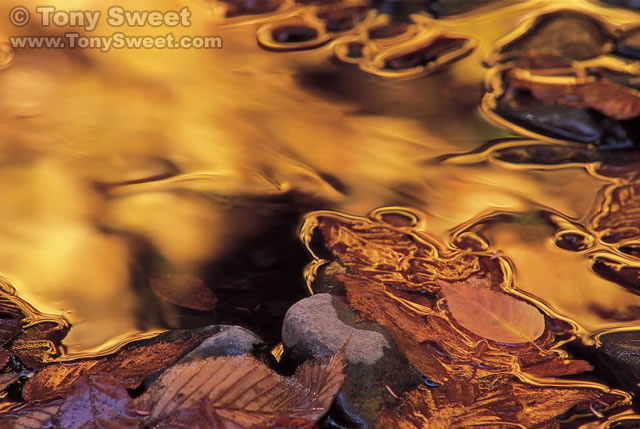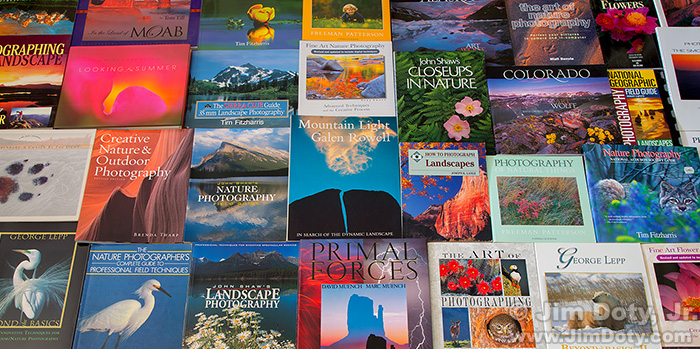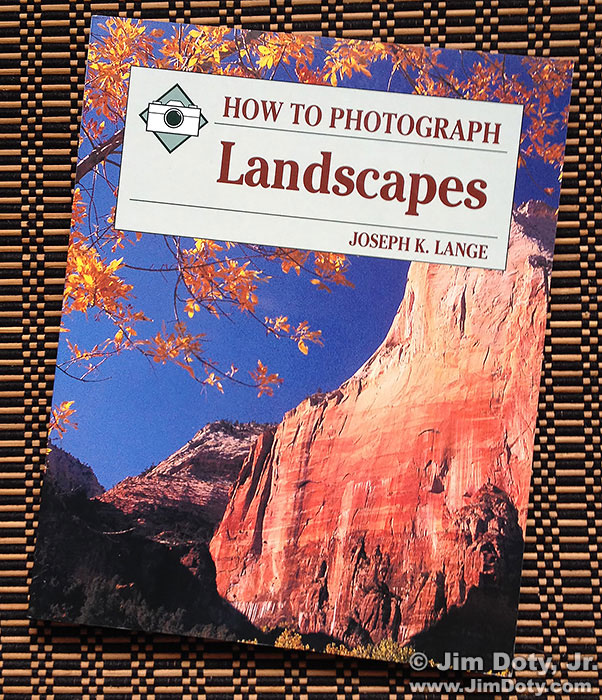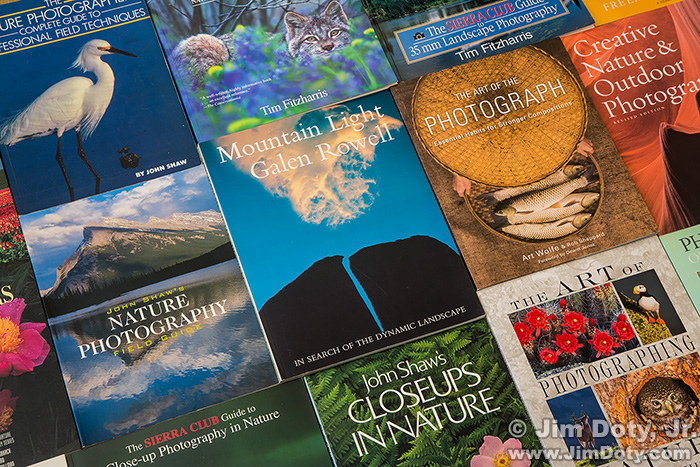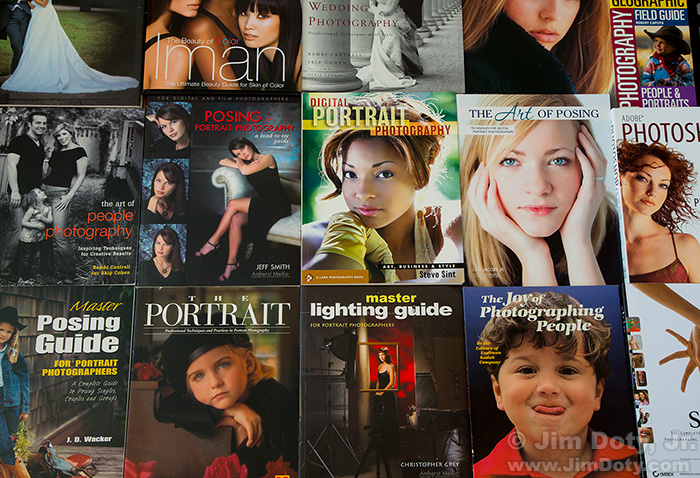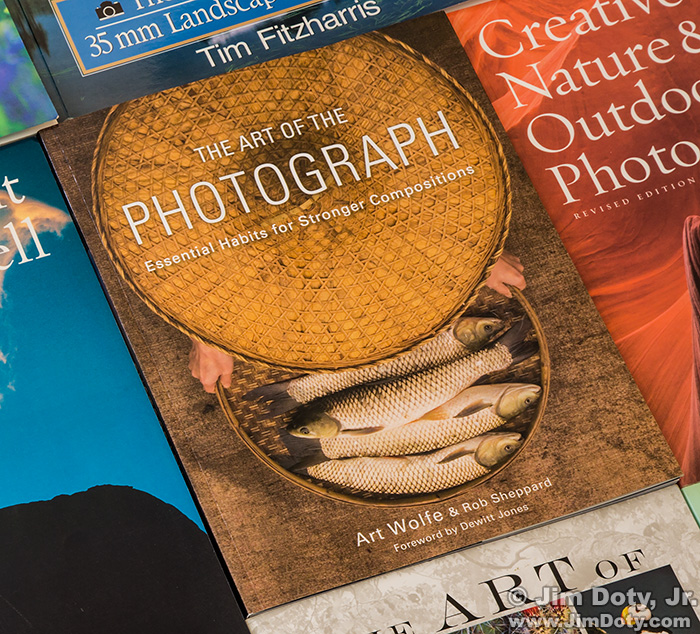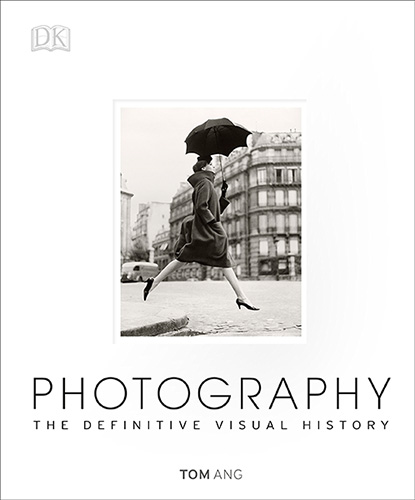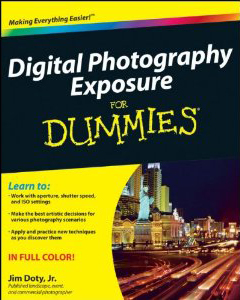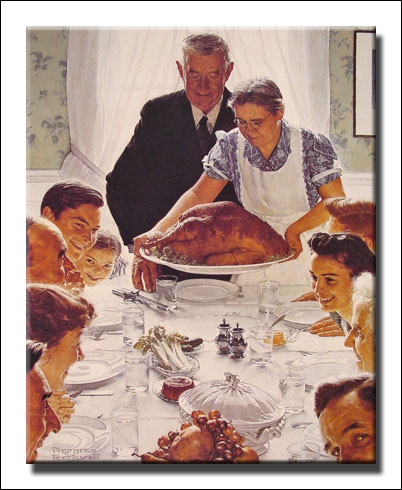I finally found an excellent series of photography lessons on video to complement my book, Digital Photography Exposure for Dummies, and it is by Joel Sartore, a first class photographer who does a lot of work for National Geographic. He does stunning photography in amazing situations all over the world. You can see some of his work in the galleries at his web site.
My Favorite Photography DVDs
Photography DVDs can inspire your photography, give you new ideas, and teach you new skills and techniques. These are my favorites.
The Best Photography Magazines
There are a ton of photography magazines out there and it seems like there are new ones every time I go to my favorite newsstand. But some are clearly better, more accurate, more useful, and with better images. The magazines that follow are, from my point of view, the best of the best photo magazines.
Mastering Photoshop: Retouching, Part Two
Two essential and challenging Photoshop skills are Masking and Compositing. Fortunately for all of us out in Photoshop land, Katrin Eismann (along with Sean Duggan and James Porto) have written a masterful book on developing these skills, Photoshop Masking & Compositing (2nd edition).
Mastering Photoshop: Retouching, Part One
Katrin Eismann is a world class expert on photo retouching. She is one of the best of the best. In 2005 she was inducted into the Photoshop Hall of Fame. Anything she writes should be high on your reading list if you are serious about making the most of your Photoshop skills.
Mastering Photoshop: Advanced Color Correction, Part Two
Everything you need to know about Dan Margulis is in Mastering Photoshop: Advanced Color Correction, Part One. After you have devoured the book I recommend in that article, you will know why you need to get Photoshop LAB Color: The Canyon Conundrum and Other Adventures in the Most Powerful Colorspace (2nd edition).
Mastering Photoshop: Advanced Color Correction, Part One
If you want to master color in Photoshop, Dan Margulis is the best of the best. He is one of the first three persons to be named as a member of the Photoshop Hall of Fame. And the book to get is Professional Photoshop: The Classic Guide to Color Correction (5th Edition). It is well worth finding on the used market (which you can do via my photography store). What Margulis teaches you to do with color is amazing. The before and after images will make your jaw drop.
Mastering Photoshop & Lightroom: Adobe Camera Raw (ACR)
If you shoot RAW camera files (and you should), this essential book should be at the top of your list. It is far and away the best of the best. You will be amazed at what you can get out of your RAW files. Your images will thank you.
A lot of the quality of your final image will be determined by what you do with your RAW files when you open them in Adobe Camera RAW (ACR) which comes with Adobe Photoshop, Adobe Photoshop Elements, and Adobe Lightroom.
Article posted Nov. 30, 2016. Revised and expanded Dec. 17, 2016.
The “Mastering Photoshop” Series
If you want to master Photoshop, a complete course can be found in the books recommended below. Think of this as a multi-book master class.
The Best Basic Introductions to Elements, Photoshop, and Lightroom
Lightroom & Photoshop: The Essential Books
If you are serious about digital photography and you use Lightroom and/or Photoshop, these books are “The Essentials”.
The Best Digital Photography Books
Some well chosen books can make a world of difference in your digital photography. Some of the best books are about the camera side of digital photography, some are about the digital darkroom side, and some are about both. Out of hundreds of books in my photo library, I picked out the best.
The Best Astronomy and Astrophotography Books
Interested in getting into astrophotography? The simple stuff is simple to do (like the photos below) and all you need are a camera, lens, and tripod. For some astrophotography you will need specialized but not very expensive equipment like the $300 sky tracker used for the photo above. The challenging stuff is hard, complicated, and expensive to do if you want eye popping photos like you see in Astronomy and Sky and Telescope magazines. No matter what you want to do, the books below will get you started. And if you just like to look at the night sky, I recommend some books for that too.
How To Photograph Wildlife, The Best Books
If creating stunning wildlife images was easy, everyone would be doing it. Fortunately for all of us, some of the very best wildlife photographers have shared their secrets in some excellent books that will dramatically improve your wildlife photography.
How To Find Wildlife, The Best Books
The first step to photographing wildlife is finding wildlife and one of the best ways to find wildlife is to look at wildlife location books. They will save you hours of frustration by sending you to the best locations to find wildlife.
Jim Brandenburg: Chased by the Light
Can a world class, National Geographic photographer lose his passion? Yes! How does he get it back?
This article was updated and re-posted here.
A Great “How To” Flower Photography Book by Tony Sweet
If you want to turn your images of flowers into true artistic expressions, this is the book for you. Fine Art Flower Photography, Creative Techniques and the Art of Observation by Tony Sweet takes you well beyond the typical flower photography guide.
Two Excellent Nature Photography Books by Tony Sweet
I’ve been reading two excellent nature photography books by Tony Sweet. They are published by Stackpole Books. They choose first class photographers who have written an excellent and ongoing series of photography books. I’ve been giving high praise to Stackpole’s photography books for years and I now have two more to add to the list.
The Best “How To” Nature Photography Books
Want to be a better nature photographer? Read anything by John Shaw, Galen Rowell, Art Wolfe, Freeman Patterson, Tim Fitzharris, George Lepp, Larry West, Arthur Morris, Allen Rokach, John Netherton, Leonard Lee Rue III, Brenda Tharp, Tony Sweet, and the Stackpole (publisher) nature series. Now for some of the “best of the best” books to look for. These are my favorites out of hundreds of photography books in my library.
My Favorite Introduction to Landscape Photography
I was packing the car for a 10 day trip to Iowa, and I picked out a few essential photography books to take with me. My plan was to revisit them in preparation for one of my upcoming nature photography workshops. When I unpacked in Iowa, Joseph Lange’s How to Photograph Landscapes was missing. Oh No!
Nature Photography Books: The Three Essentials
A good photography book can put you well ahead of the game, and three essential nature photography books (plus maybe a few others) can save you years of time learning things the hard way.
Excellent “How To Photograph People” Books
More photos are taken of people than any other photograph subject. Anyone can take snapshots. If you want to take more memorable and eye-catching photos, here are some excellent books to help you do just that.
Advanced Photographic Composition: The Best Books

Is composition something that can be taught, or is it innate? Probably a bit of both. It is hard to look at photographs by Frans Lanting, Art Wolfe, Galen Rowell, and Dewitt Jones without coming to the conclusion that they were born with some kind of innate sense of composition. On the the other hand, it is clear that photographers can improve dramatically with the right kind of guidance.
Photographic Composition: The Essential Book
Art Wolfe is a world class photographer, and it shows in The Art of the Photograph. There are a lot of books on photographic composition (I own several, and I’ve looked through a lot more in various libraries), but this is far and away the best introduction to photographic composition I have come across. If you aren’t an experienced professional photographer, this book is an absolute must read. (I am assuming professionals already know this stuff.)
The Best Illustrated History of Photography
When I picked this book up off the shelf, I couldn’t put it down, at least not until I put it down on the check out desk and bought it. There have been some very fine illustrated history of photography books that have come and gone, but this is far and away my favorite.
Best Book on Professional Exposure Techniques
I have no idea how Michael Freeman can be a well traveled, international photographer and still find time to write so many terrific photography books. But somehow he manages to do both. I suspect he never sleeps. I imagine him creating images and writing books 24 hours a day, stopping only to eat once or twice a week!!
Digital Photography Exposure for Dummies Receives Apogee Photo Magazine’s Highest Rating
Michael Fulks, the publisher of Apogee Photo Magazine, wrote at an excellent review of Digital Photography Exposure for Dummies and gave the text an A++, the magazine’s highest rating. The review follows.
Jennifer Blakeley Recommends Digital Photography Exposure for Dummies
Jennifer Blakeley does beautiful newborn photography. Her celebrity client list includes Megan Fox and Brian Austin Green; Vanessa and Donald Trump Jr.; and Jocelyn Towne and Simon Helberg (Big Bang Theory). She is also the founder of Alphabet Photography. A highly respected and award winning Canadian photographer, she has also worked with the Canadian Olympics Gymnastic Team.
Tim Grey Recommends Digital Photography Exposure for Dummies
With 12 books, hundreds of magazine articles, over a dozen instructional videos, and numerous workshops to his credit, digital photography expert Tim Grey really knows his stuff. In one of his eNewsletters, Tim gives this excellent recommendation for Digital Photography Exposure for Dummies:
Happy Thanksgiving!
When I was growing up, we spent many a Thanksgiving and Christmas at grandpa’s house. Thanksgiving was a much anticipated and happy time. We would often leave home on Wednesday afternoon after dad got home from work. It was a long 7 hour drive to Grandpa’s house in those pre-interstate highway days, so it would be really late by the time we arrived.

